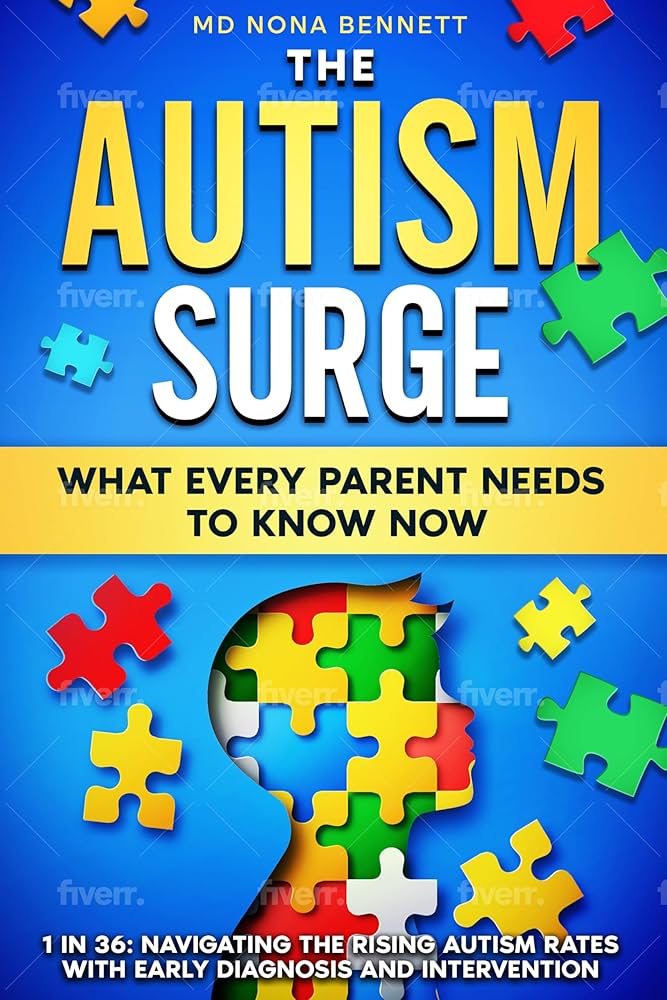The growing awareness of autism, refined diagnostic criteria, and advances in screening have all contributed to the surge in autism diagnoses.

Autism Spectrum Disorder (ASD) diagnoses in the worldwide have seen a dramatic increase over the past two decades. From 6.7 per 1,000 children in 2000, the prevalence soared to 27.6 per 1,000 by 2020—equating to 1 in 36 children diagnosed. This rise in ASD diagnoses has sparked debate among experts and physicians, with some attributing the increase to enhanced diagnostic practices, while others point to the medicalization of what might have once been seen as misbehaviour.
The growing awareness of autism, refined diagnostic criteria, and advances in screening have all contributed to the surge in autism diagnoses. In 2013, changes in diagnostic criteria broadened the definition of autism, enabling doctors to identify a wider spectrum of symptoms, especially in children with average or above-average IQs. Improved screening tools and a greater societal understanding of autism have also helped detect cases that may have been previously overlooked, particularly in children without intellectual disabilities. The increase in diagnoses is most pronounced in regions like New York and New Jersey, where the autism diagnosis rate tripled from 2000 to 2016.
However, some argue that the rise in autism diagnoses may also reflect a shift in how children’s behaviour is perceived. A family doctor suggests that children exhibiting defiant or challenging behaviour are increasingly being diagnosed with autism rather than being subjected to behavioural correction. This “medicalization” of misbehaviour, he argues, shifts responsibility away from parents and teachers and may discourage effective discipline and problem-solving. Schools may be incentivized to diagnose children with autism for financial reasons, while some parents may be more likely to attribute their child’s struggles to a medical condition rather than addressing potential parenting or environmental issues.

While factors like improved awareness and diagnostic tools have certainly contributed to the rise in autism diagnoses, genetic and environmental factors also play a role. Research indicates that around 83% of the risk of developing autism is inherited, with multiple genes potentially contributing to the condition. Advanced parental age, particularly in fathers, is another recognized risk factor. As parents delay having children, the genetic risks associated with autism increase. Environmental influences, such as viral infections or vitamin D deficiencies during pregnancy, are also being explored as potential contributors, although definitive links are yet to be established.
Despite the challenges in pinpointing the exact causes of the rising autism rates, one thing is clear: early detection and intervention are critical. The American Academy of Paediatrics recommends routine autism screening for toddlers, but inconsistent screening practices and lack of follow-through can hinder timely support. While better detection is undoubtedlybeneficial, it also increases the potential for is diagnoses, especially when conditions like ADHD or mild intellectual disabilities overlap with autism.
Ongoing research into genetic, biological, and environmental factors is essential for improving diagnostic accuracy and treatment options. Advances in diagnostic tools, such as the Gilliam Autism Rating Scale (GARS), Indian Scale for assessment of Autism(ISAA) which has evolved over time to improve early detection, will play a key role in refining our understanding of autism. By continuing to improve early detection and intervention strategies, we can provide better support for children and families affected by autism, helping them thrive and navigate the complexities of ASD.
In conclusion, the rise in autism diagnoses can be attributed to improved diagnostic practices, increased awareness, and genetic and environmental factors. While the surge in diagnoses reflects positive progress in recognizing the disorder, it also raises important questions about how society views and responds to challenging behaviors in children. Moving forward, ensuring timely and accurate diagnoses, along with effective interventions, will be crucial in supporting individuals with autism and fostering a more inclusive society.
Dr. Durga Prasad Mishra
Dean and Principal
School of Occupational and Physiotherapy
DRIEMS UNIVERSITY














